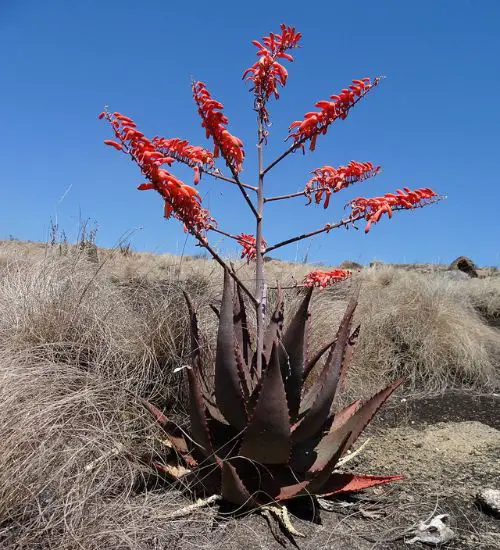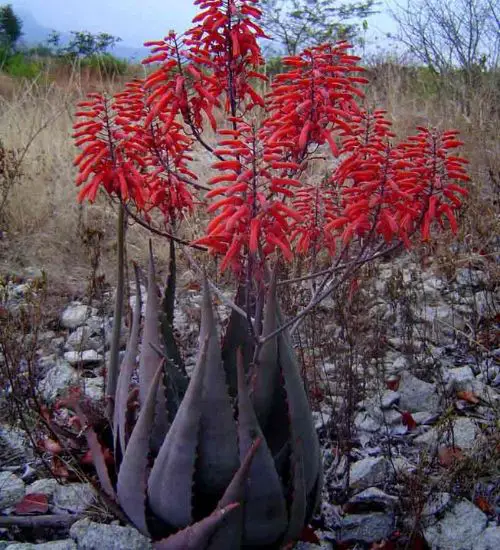Sun: full sun to partial shade
Water: More water than a typical succulent
Temperature: Zone 9a from 20° F to 25° F (-6.7 ° C to -3.9° C) to Zone 11b from 45° F to 50° F (7.2° C to 10° C)
Winter Survival: Not cold hardy
Propagation: offsets
Flower: in the Winter.
Flower Type: Red, Orange
Toxic: Generally non-toxic to humans and animals
Dormant: summer
Space Requirement: Indoors & Outdoors
Common Problems: No major pests, Plants may rot if overwatered
Where to buy Aloe chabaudii?
Basc Care for Aloe chabaudii
Watering
Watering for Aloe chabaudii is a simple task. It requires More water than a typical succulent.
One simple tip for you is that you can use some online apps to check the soil status before you go water your succulents. I would recommend the ThePlantsCheck app, it has some nice features there.
Fertilizing
Only feed this succulent during its active growing seasons which means no information. Use the right fertilizer applied in the right amounts. Applying half-strength balanced fertilizer every month or so is recommended for optimal results.
Do not fertilize during summer as the plant is dormant.
Sun & Location Requirements for "Grey aloe, Dwala Aloe"
Aloe chabaudii needs full sun to partial shade in order to thrive. While this variety needs plenty of bright light, it is important not to place it in direct sunlight for extended periods of time as this can cause damage or scorching to the leaves and stems. A shadier spot with indirect light could be just what "Grey aloe, Dwala Aloe" needs.
As per this succulent profile, it is only able to stay healthy when the environment temperature is above the range of zone 9a from 20° F to 25° F (-6.7 ° C to -3.9° C).
In order to protect Aloe chabaudii from freezing temperatures, it is important to provide adequate insulation and drainage. A layer of mulch or gravel will help protect the roots by keeping them warm during cold weather. In addition, protection from wind and sun exposure can help reduce the chances of frost damage.
Any succulents in the group will need a medium space to grow. You can place your pot at your table or window. Since this plant needs more space than mini succulents, you should consider do not plant them together with other succulents/plants.
Aloe chabaudii also benefits from some indirect light throughout the day as well, so make sure you give it enough space to soak up light without becoming too exposed to heat.
Propagation
Offsets are an easy and reliable way to propagate succulents, like Aloe chabaudii. With just a few simple steps, you can get a brand-new plant from an existing one.
Toxicity

Aloe chabaudii is not known to pose any significant health risks, as it is not considered to be toxic. However, it is best to keep the plant away from young children and pets, as they may ingest some of the parts of this plant that could contain toxins which can cause mild skin irritation.
Pests and Diseases
Aloe chabaudii is not affected too much by common pests and diseases like most of the other succulents.


